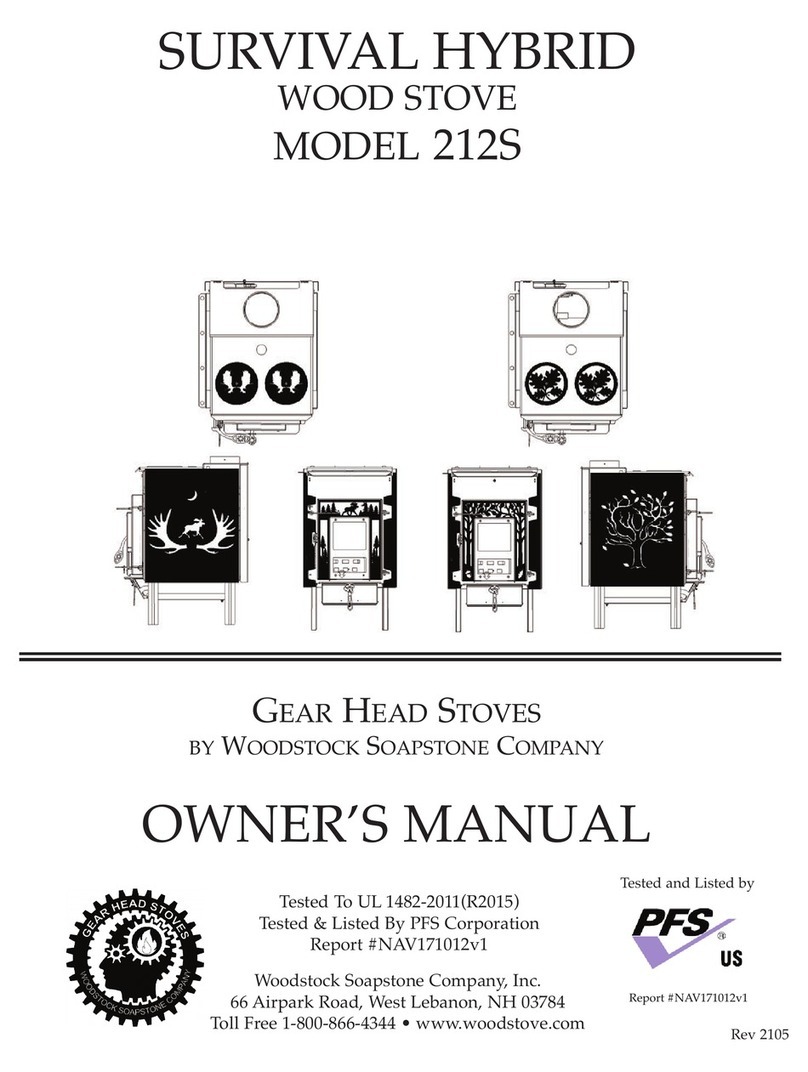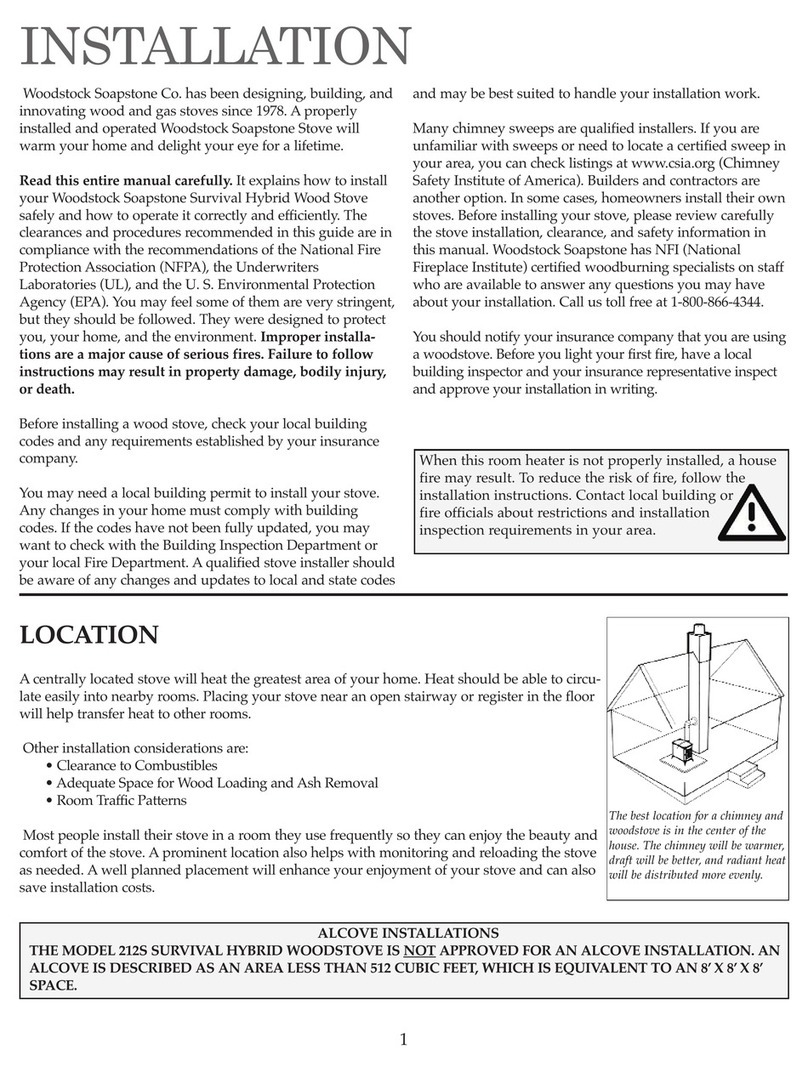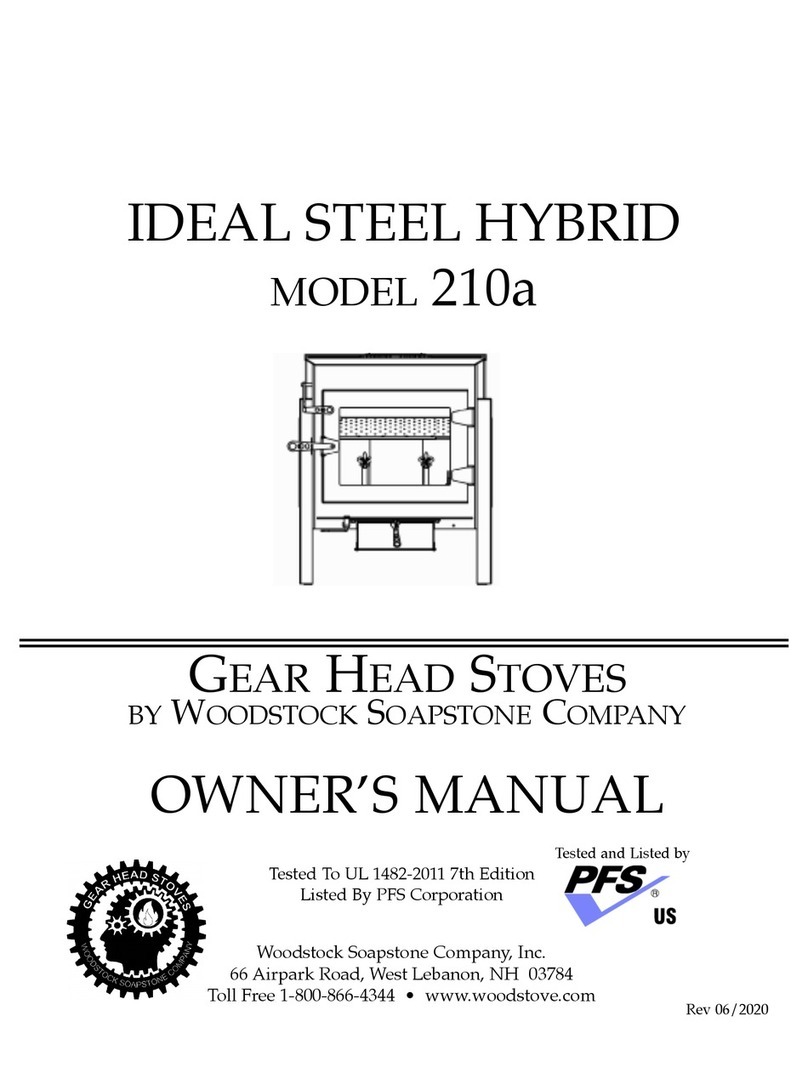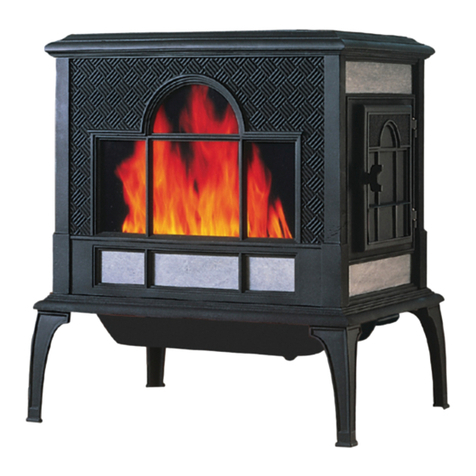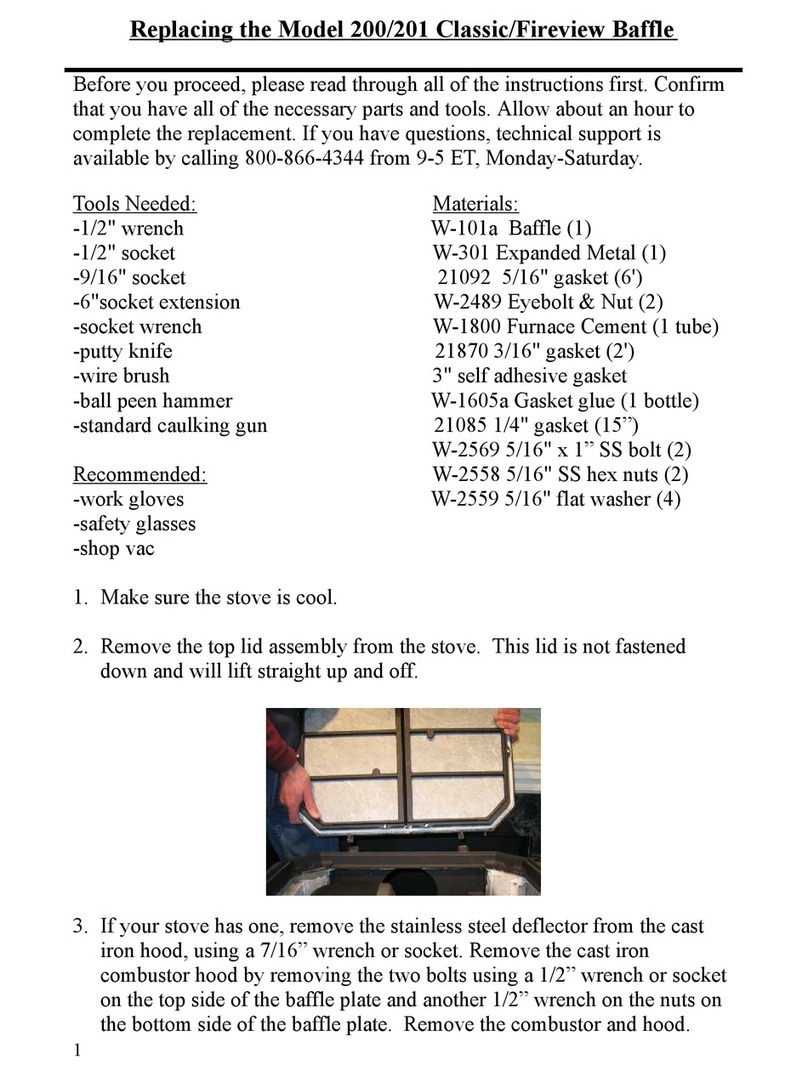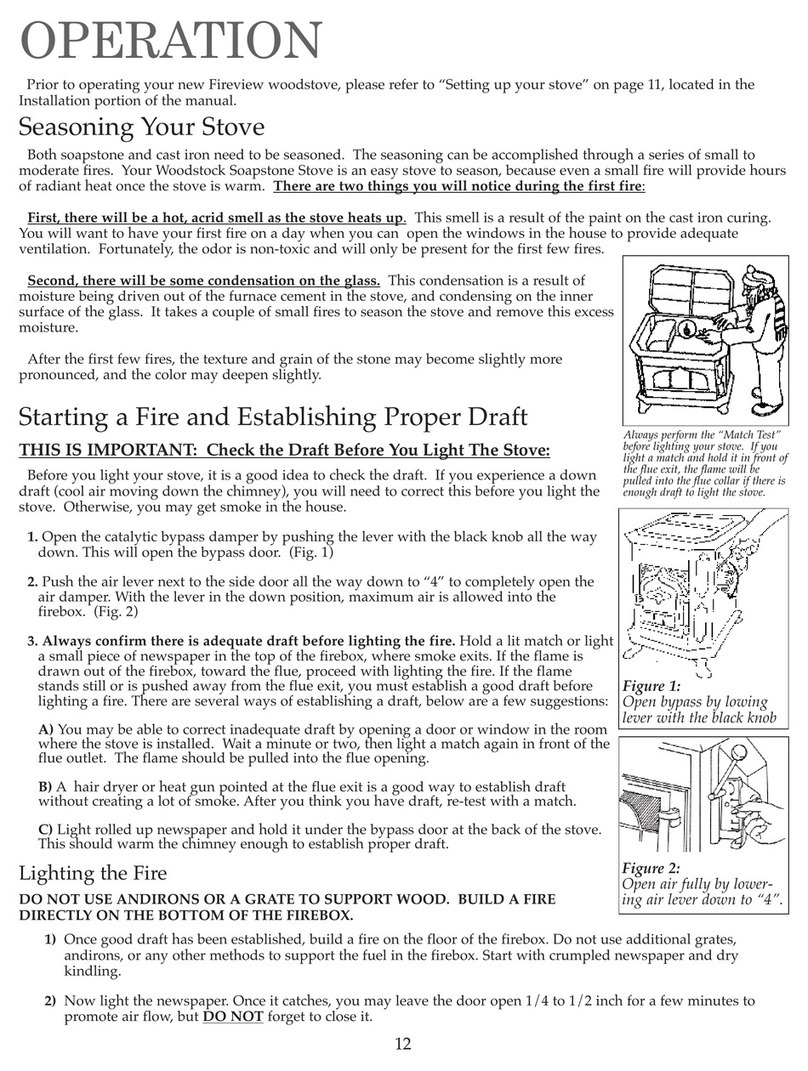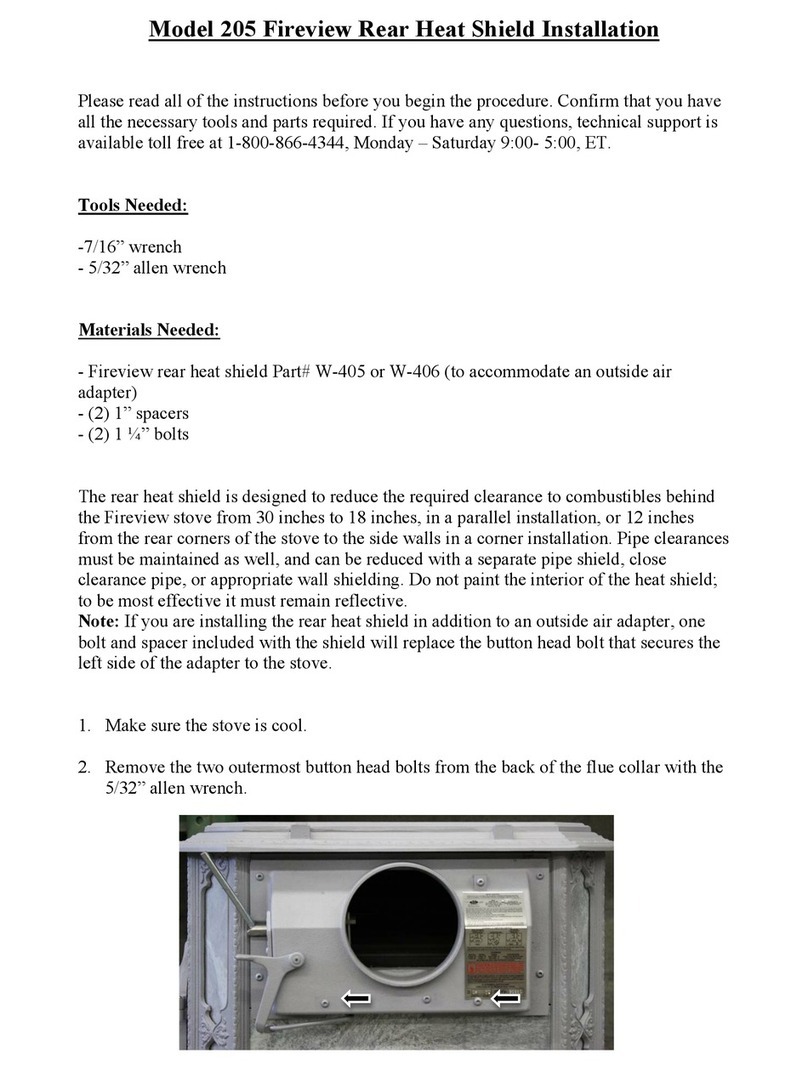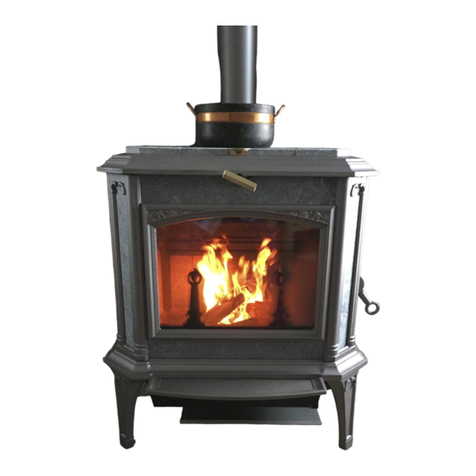
Lined Masonry Chimneys:
Always have the chimney inspected prior to your stove installation. f your
chimney is not lined with appropriately sized clay flue tiles, or the clay tiles are
old, cracked, damaged or otherwise compromised, a stainless steel chimney
liner or poured liner will be required. Depending on the condition of your flue
or clay tiles, the stainless steel liner may need to be wrapped in a high tempera-
ture insulation blanket. A liner may also be recommended if your flue is too
large for the draft to flow properly (please refer to the section on chimney siz-
ing). Our customer service department can answer any questions regarding the
use of a liner and/or insulating blanket. Call 1-800-866-4344.
Existing chimneys should be checked twice a year for obstructions, cre-
osote deposits, surface cracks, chemical deterioration and poor construction.
Any damage should be repaired immediately. Two other chimney related
areas that should be checked are chimney penetrations at the floor or ceiling
joists, and at the roofline. There should be at least 2 inches of clearance be-
tween the chimney and floor joists or other combustible materials. Poor
flashing between the chimney and the roof line can cause leaks and deterio-
ration of chimney mortar.
You should make preliminary checks, but if you have any doubts, or are
unfamiliar with chimney construction, cleaning, or maintenance, have a
local fire official or certified chimney professional inspect your chimney. f
repairs are required, be sure to use someone who is knowledgeable in chim-
ney work and familiar with local code requirements.
n addition: All brick or cinder block chimneys should have clean out ac-
cess with a tight fitting door. Masonry chimneys should have a wash at the
top. All chimneys should have a cap to keep out rain and snow and to mini-
mize downdrafts caused by wind.
Passing Through A Combustible Wall:
With an exterior chimney, in most cases the chimney connector (or stove
pipe) will need to pass through a combustible wall. The following are
acceptable methods:
A. Use a section of Solid nsulated Prefabricated Metal Chimney to connect
to the chimney - Use a section of insulated prefabricated 2100° Class A
chimney pipe listed to UL 103 HT (at least 1” of insulation or greater) the
same inside diameter as the stove pipe and maintain a 9” air space between
the wall of the prefabricated chimney and the combustible wall. This section
of chimney pipe can be supported by a sheet metal plate securely fastened to
the combustible wall, with a hole cut in the middle of it. This will close the
gap around the chimney pipe and the framed opening. (See Diagram A
Below)
B. Build a solid brick surround around a tile liner - Frame a 3.5” thick brick
surround into the combustible wall you need to pass through. Maintain a
minimum 12” brick separation from the clay liner to combustibles. The
minimum 5/8” thick clay liner should be cemented in place and run from the
outer surface of the brick to the inner surface of the chimney. (See Diagram B
Below)
C. There are also UL Listed kits available that are specifically designed for
passing through a combustible wall. For more information on these kits,
please contact Woodstock Soapstone Company. Please note: there are several
UL listed wall pass through kits available, always follow the manufacturers
specific installation instructions. (See Diagram C Below)
3
A.
Using a Prefabricated Metal C imney sec-
tion to connect to an existing masonry
c imney located be ind a combustible wall
Refractory
Cement
nsulated
section of
factory built
chimney
Sheet
Steel
Supports
9”
9”
9”
9”
T e minimum clearance for a single wall
metal stovepipe and terra cotta t imble at
t e c imney connection is 12”
B.
Refractory
Cement
12”
12”
12”
12
Stainless Steel
Connector
Fireclay Thimble
UL listed and approved wall pass t ru kit.
C.
UL listed
insulated
thimble
Minimum required
air space
Listed wall
protector &
cover shield
Connecting t e stove to a masonry t imble.
